4 May 2020 - 2 September 2020
Vitaliano VI
The invention of Isola Bella
Curated by Alessandro Morandotti and Mauro Natale
400 years from the birth of Vitaliano VI and in the year of Piedmontese Baroque, this exhibition looks back over his life, and above all his work – the vessel that emerges from the waters of Lago Maggiore – still a source of admiration and amazement today to visitors from all over the world.

“L’isola è dama mia”
Staged in the grand hall completed by his descendant of the same name Vitaliano IX in 1956, in its first section the exhibition looks back over the main phases in the life of Vitaliano VI, the real author of the renewed good fortune of the family in the second half of the 17th century, through painted portraits, sculptures, medals and documents – including also the project of the Palace and the Gardens of Isola Bella – some never exhibited to the public previously.
The Baroque style in north-western Italy is the core of this exhibition, which can still be seen to a large extent in most of the rooms, where the original decoration is still present.
Stones, marbles and alabasters, paintings with countryside landscapes and perspectives, frames decorated with rock crystals, agates and lapis lazuli. In the Garden, stone architectures covered in mosaics, statues, fountains that, together with the hedges, create genuine theatres in the greenery.
Family strategies
The story of the exhibition is presented in the huge hall that for a long time was at the centre of lengthy debates between patron Vitaliano VI Borromeo and architects Andrea Biffi, Filippo Cagnola and Carlo Fontana.
For the first time, on the occasion of the exhibition, a large wooden model is presented of this space.
The first section of the exhibition is devoted to the family’s strategies: from the mid-17th century, Isola Bella was the spectacular theatre of the international consecration of the heirs of San Carlo and Federico Borromeo. Vitaliano VI and Giberto III, a cardinal in Rome, wove a precious network of alliances between Madrid, Vienna and Rome, and that family of ancient feudal nobility was projected into more expansive settings, beyond the confines of the so-called ‘Borromeo State’, as historians have defined the territory of Lago Maggiore that was controlled by the family from the 15th century.
An episode that was emblematic of this new expansion was the marriage of their nephew and advocate Carlo IV to the niece of Pope Odescalchi, Innocent XI, in 1677. A grand naval festival was organised to celebrate this wedding in the deep waters around the island, and the plans and graphic recreations of the event can be viewed in this exhibition.
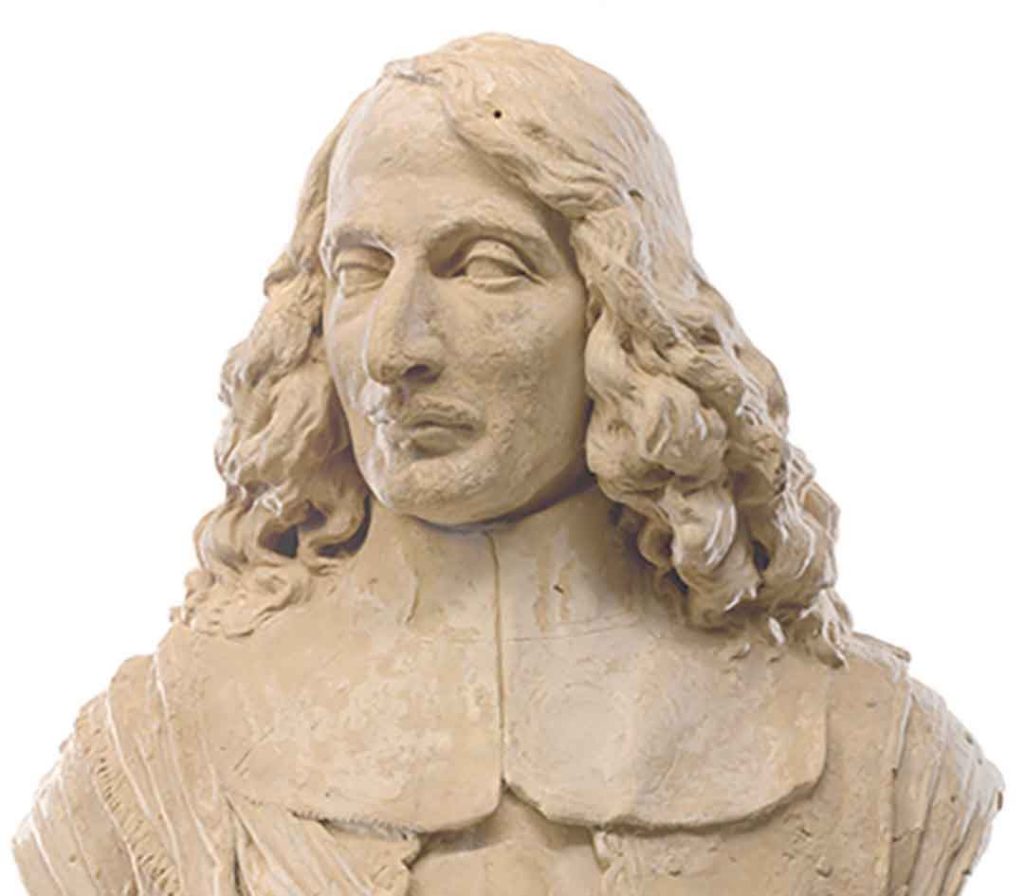
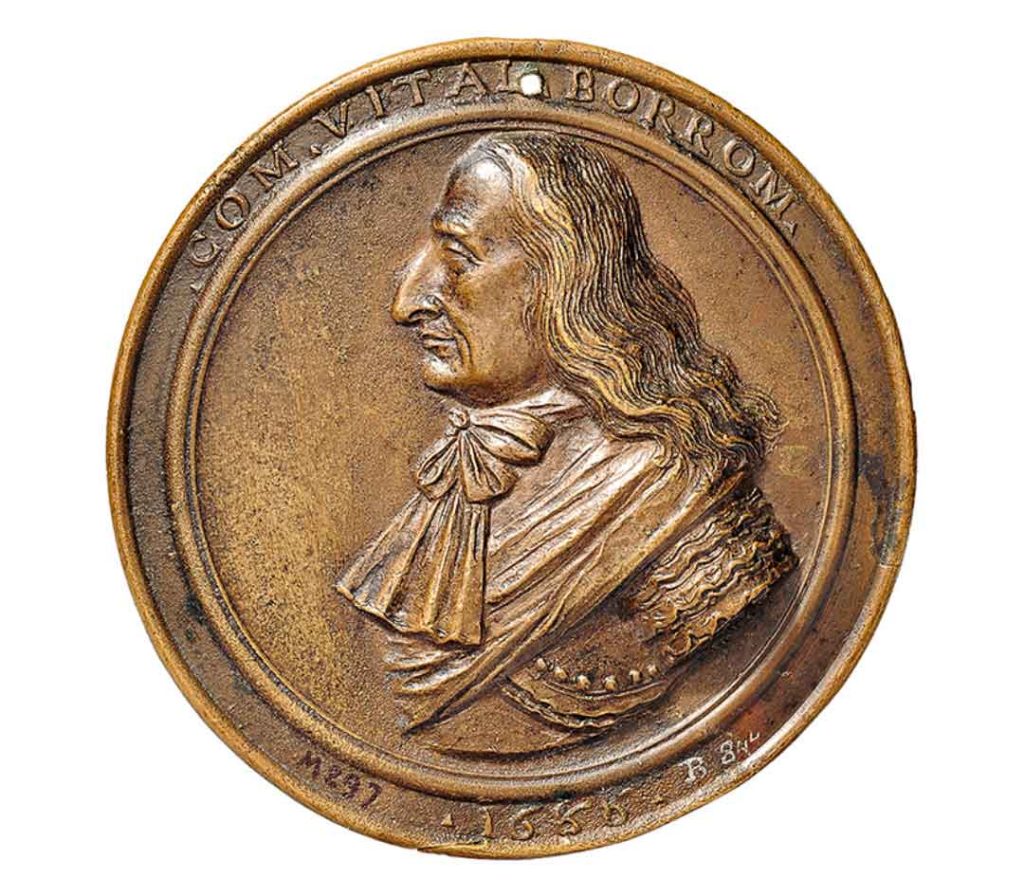
In this section we also find the marble bust of Vitaliano VI Borromeo and his portrait painted by an unknown artist. The bust, a work by Carlo Simonetta, is the only sculptural representation of Vitaliano VI to be created when the count was alive.
The painting, on the other hand, is a courtly portrait that underlines the virtues of grandeur, dignity and magnificence that were so typical of the Borromeos. It is thought that the painting was executed by Pier Francesco Cittadini, who was called upon on a number of occasions to visit the Borromeo house to paint family members. This first section is completed with the portrait of Vitaliano VI by Salomon Adler and with the medals created by Giuseppe Vismara (the signed ones number as many as 65) illustrating the civil, political, military and artistic life of the dukedom through the metal effigies of its protagonists, including that devoted to Vitaliano VI in 1688.
History about a grand project
It was a project that was already dear to Carlo III, father of Vitaliano VI, who imagined that rocky “cliff” being the transformed into a terraced garden.
A design from the years 1660-1665 acquaints us with the entire island surrounded by the lake before the significant interventions promoted by Vitaliano VI substantially modified its appearance. The relief is from slightly before the first important project for the Palazzo in plan form, which was by architect Andrea Biffi (circa 1665), who made his indelible mark on the realisation of the great construction, also orienting the choices of the architects who followed him.
From that moment the island changed and took shape, thanks to a constant project planning described as a very highly structured palimpsest that has slowly developed over time, both gardens and Palazzo, outdoors and indoors. The design of the grottos is particularly fascinating: the ambitious idea for the “grotto-esque” apartment was conceived by Vitaliano VI Borromeo starting in 1662, imagining the creation of “rooms for the summer with the appearance of grottos”, which prompted amazement in the visiting guests of the time.
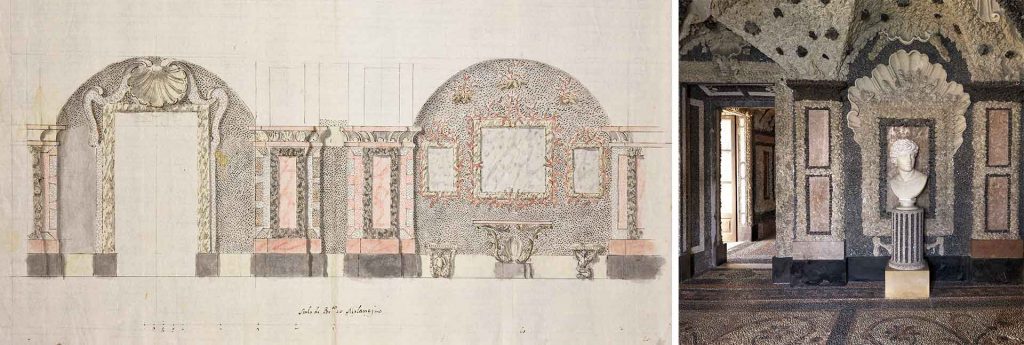
The large design by Carlo Fontana representing Isola Bella from the gardens side is from 1686. Composed of 24 cards of various sizes glued onto canvas, the project enables an amazing panoramic view to be created, emphasising the length of the island.
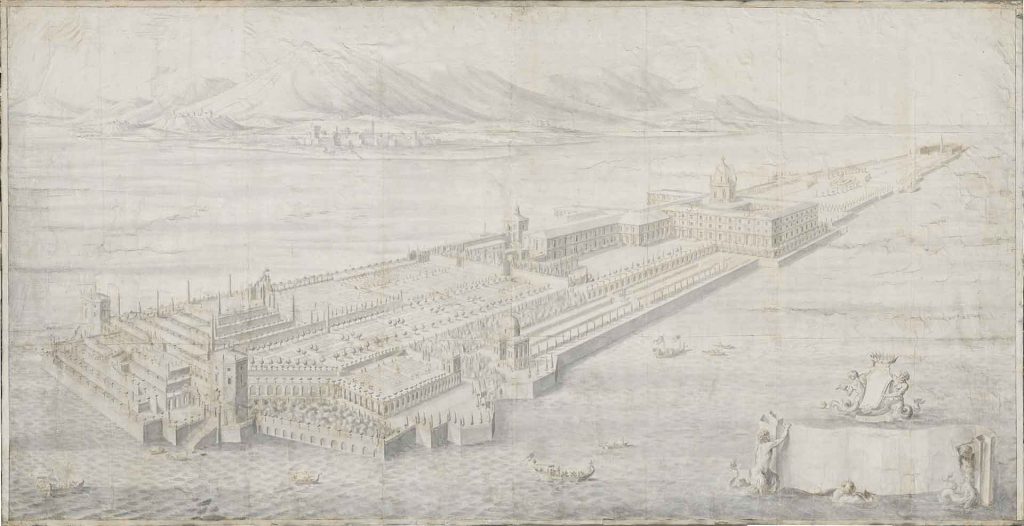
What clearly emerges from this section, and when seeing the exhibition in general, is that the work certainly was not concluded with the death of Vitaliano VI in 1690. Already before his decease, the island was an obligatory stage of the Grand Tour and the Vedutisti – even famous members such as Van Wittel – celebrated it as an enchanting place, in noble competition with the perspective design by Carlo Fontana, which, midway between reality and fantasy, was to be a seminal work in Europe.
The interiors of Palazzo Borromeo
The Baroque layout design that was so desired by Count Vitaliano VI Borromeo is original and unique, with its furnishings, sculptures, paintings, stuccos, coloured and gilded wooden carvings and cabinetmaking.
The project was curated by architects Andrea Biffi and Filippo Cagnola, the stylistic continuity between whom is evident, as we can deduced from the designs on display. The rooms are embellished by hundreds of works with gold- and turquoise-painted frames, marble busts and alabaster vases, marked by the presence of imitation ebony painted wooden cabinets, enriched with flower-decorated slates, which are also dotted around the walls.
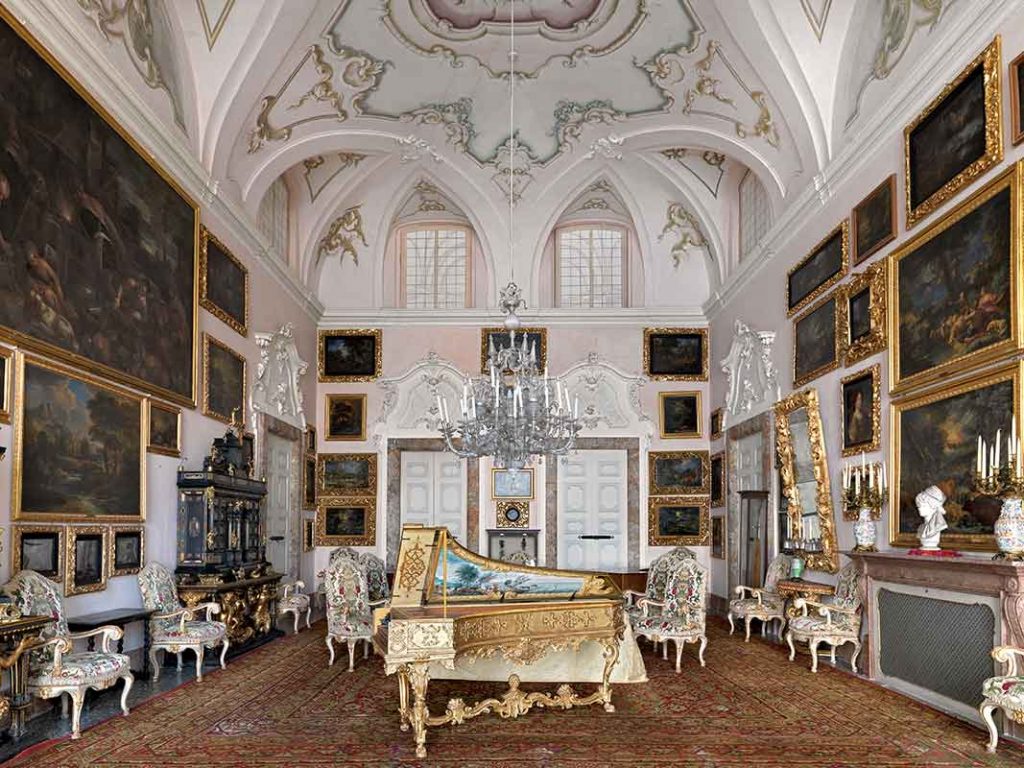
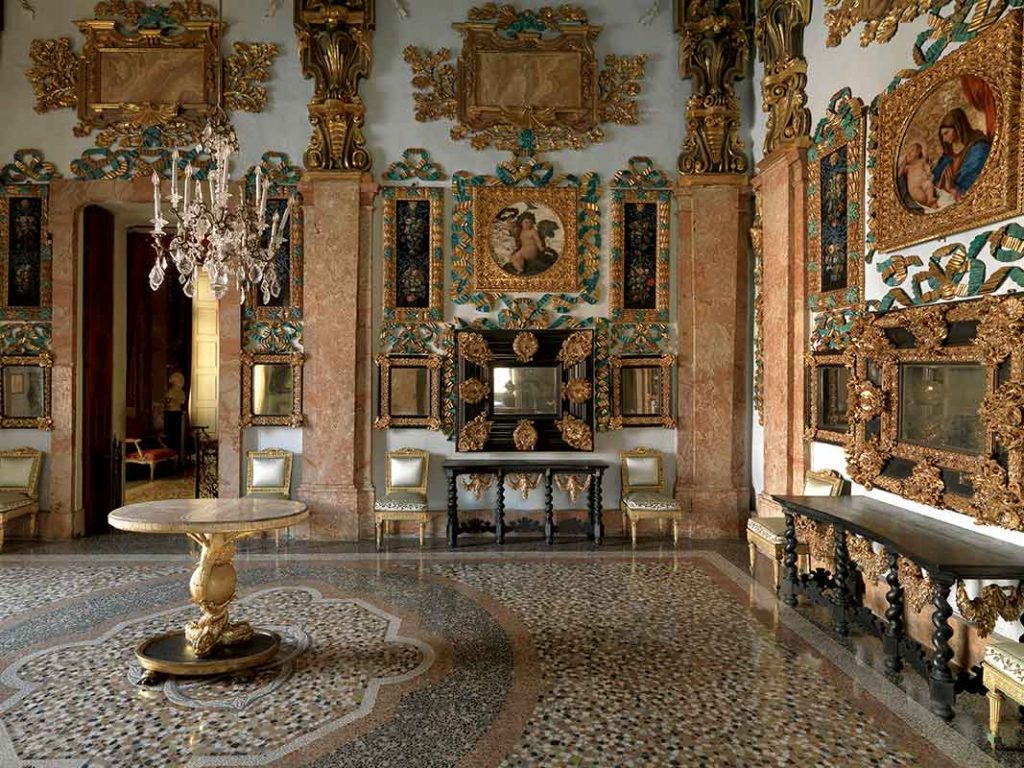
Vitaliano VI and his designers played continually with the contrast and the similarity between the interior of the building and the exterior of the terraced gardens and views across the lake: natural and artificial wonders were constantly placed in contrast with each other.
In the project for the Palazzo, the Count had envisaged a central gallery (to house paintings that were particularly dear to him) with an annexed alcove, a solution that was not unusual for a building in the Baroque age. This is evidenced with drawings, perspective views, worksite records and photographs with hypotheses of construction and decorative solutions.
It is interesting to make a comparison with the current layout of the building, which enables us to observe how some of the rooms (the Medal Room, the Throne Room and the Room of the Two Alcoves) still retain their original appearance today.
Among the artworks on display, the works by specialists in the new painting genres stand out: still lifes of flowers, landscapes and architectural perspectives. Among all these, it is worth dwelling in front of the self-portrait by painter Pieter Mulier (1637-1701), nicknamed Il Cavalier Tempesta, and his wife Anna Eleonora Beltrami. It embodies a very special story of patronage, in which Mulier was welcomed by Vitaliano after long years of imprisonment in Genoa, enjoying his protection. To express his gratitude, Tempesta donated a conspicuous number of works with variations of his different specialities in the field of landscape and the harbour in stormy weather (hence his nickname: Tempesta), making him the most important landscapist to be documented on the island since the years of Vitaliano VI.
The Salone Nuovo
The Salone Nuovo [New Hall] of the Island, which is also the space that hosts the exhibition.
The Salone was the object of a lengthy planning process: between 1686 and 1688 the architects Andrea Biffi, Filippo Cagnola and Carlo Fontana attempted to interpret the ambitions of Count Vitaliano VI Borromeo, who imagined an environment with a dome, inspired by the plan of the Basilica of San Lorenzo in Milan, one of the oldest churches in the city.
The grand ideas and proposals set down on paper in a series of valuable drawings are on display here for the first time in a systematic way. The initial idea of building a Hall of Honour dates back to 1662, but the work on the construction of this wing of the building begin several years afterwards, following a planning phase that lasted a number of years. In 1690 the death of Vitaliano VI led to a stopping of the work, which had only been conducted on the perimeter walls, as can be observed from the photographs on display.
Between the 18th and 19th centuries the Borromeos attempted to bring the work to a conclusion; in the 20th century the environment acquired its definitive form, implemented by Vitaliano X, who created the Salone and its Baroque-style decorations between 1948 and 1960.
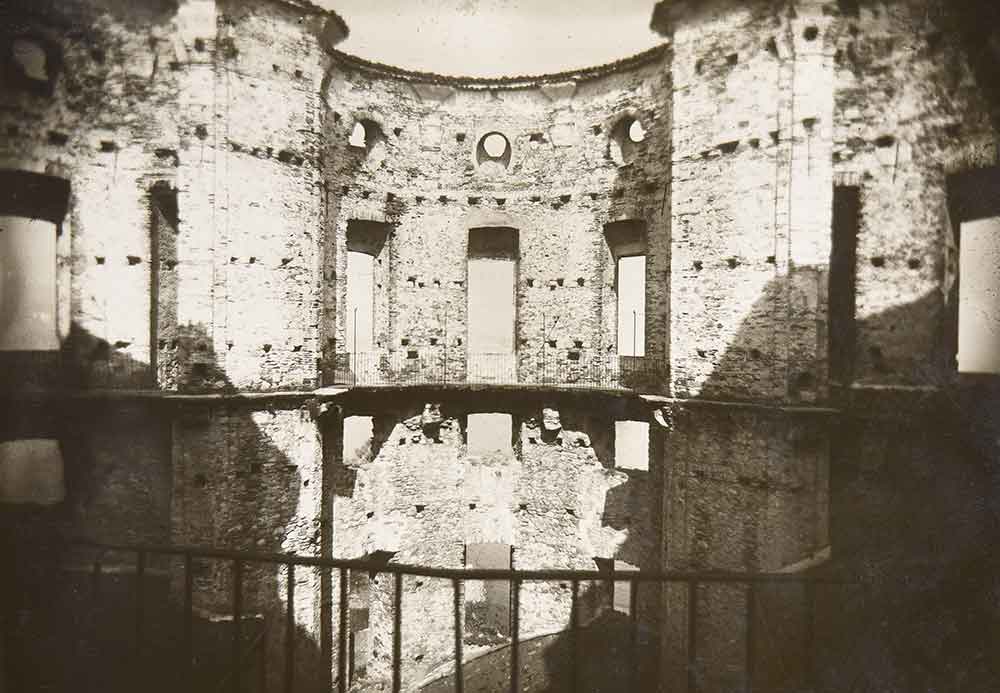
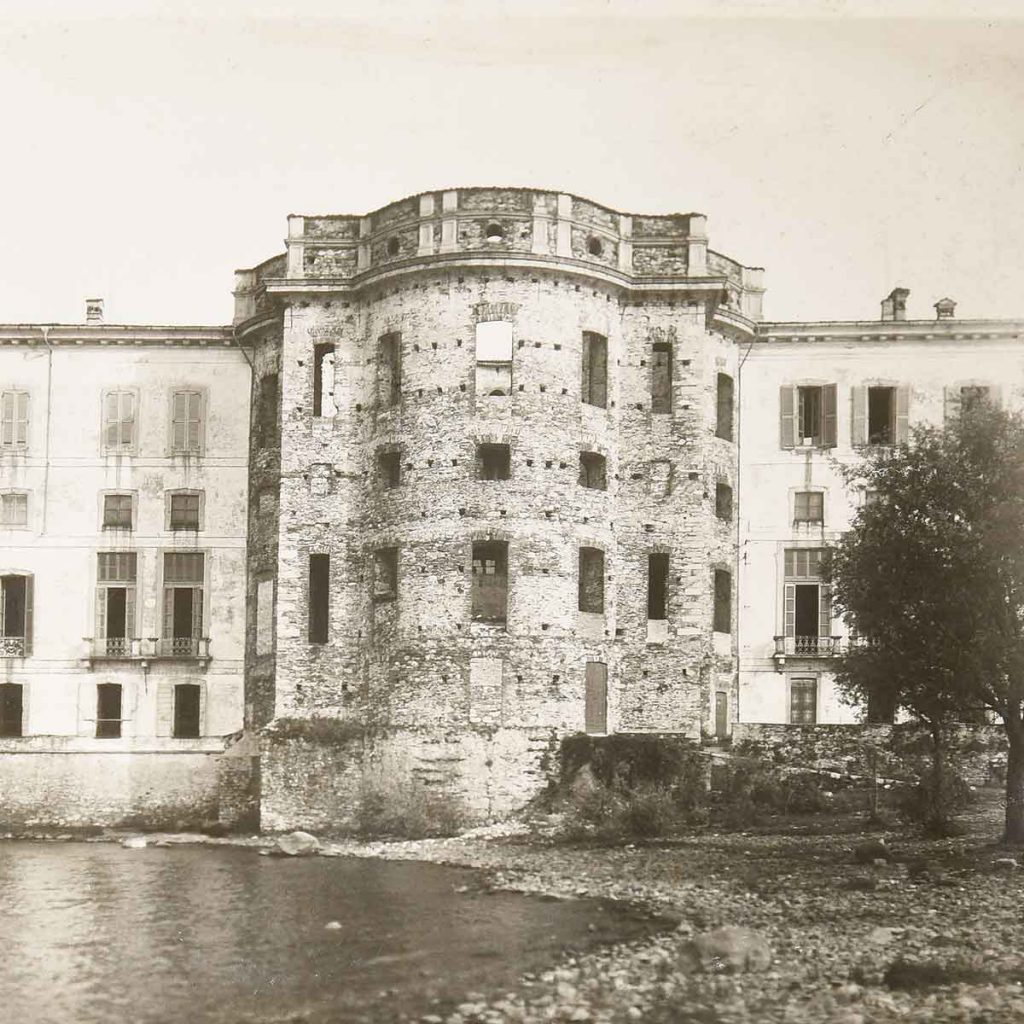
The evolution of the project leading up to its current structure is recounted through a significant number of sketches and studies of details and decorations,.
A spectacular wooden model of the central hall of Palazzo Borromeo can also be admired in the exhibition; this was created between 1780 and 1781 by carpenter Giuseppe Antonio Oltolina from a project by Cosimo Morelli, an architect from Imola. The model, completely original, has been studied and restored and is presented to the public for the first time on this occasion. Its fir wood structure is covered in walnut for all the decorative details, both inside and outside.
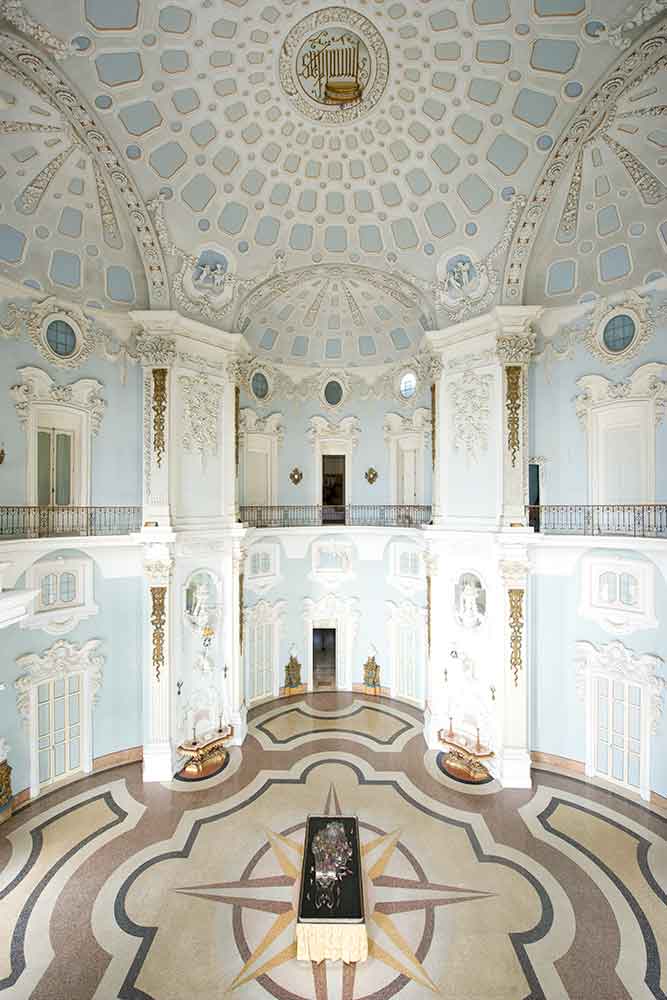
Useful info
The visit is included in the entrance ticket to Palazzo Borromeo.
The exhibition is part of the project “L’essenziale è Barocco” [The essential is Baroque] promoted by Regione Piemonte.
For more information www.visitpiemonte.com.

Terre Borromeo
A story of love, protection and respect that has lasted for six centuries.
Who we areHelpful Tips
Hours
-
Isola Bella
-
Isola Madre
-
ROCCA DI ANGERA
-
PARCO PALLAVICINO
- Buy tickets, guided tours and much more safely and quickly directly online.
How to get
- Terre Borromeo is easily accessible! They are only an hour and a half from Milan and easily reachable from the main airports. Find out how to reach them by car, train and how to book the ferry that will take you to the islands.
What to see
-
Isola Bella
- Palazzo Borromeo +
- The Italian-style garden +
-
Isola Madre
- Palazzo Borromeo +
- The English-style garden +
-
Rocca di Angera
- The Historic Rooms +
- The Museum of Dolls and Toys +
- Ala Scaligera +
-
Parco Pallavicino
- The fauna +
- The flora +
-
Parco del Mottarone
- Mottarone Adventure Park +
- Bar Stazione +
- Rifugio Genziana +


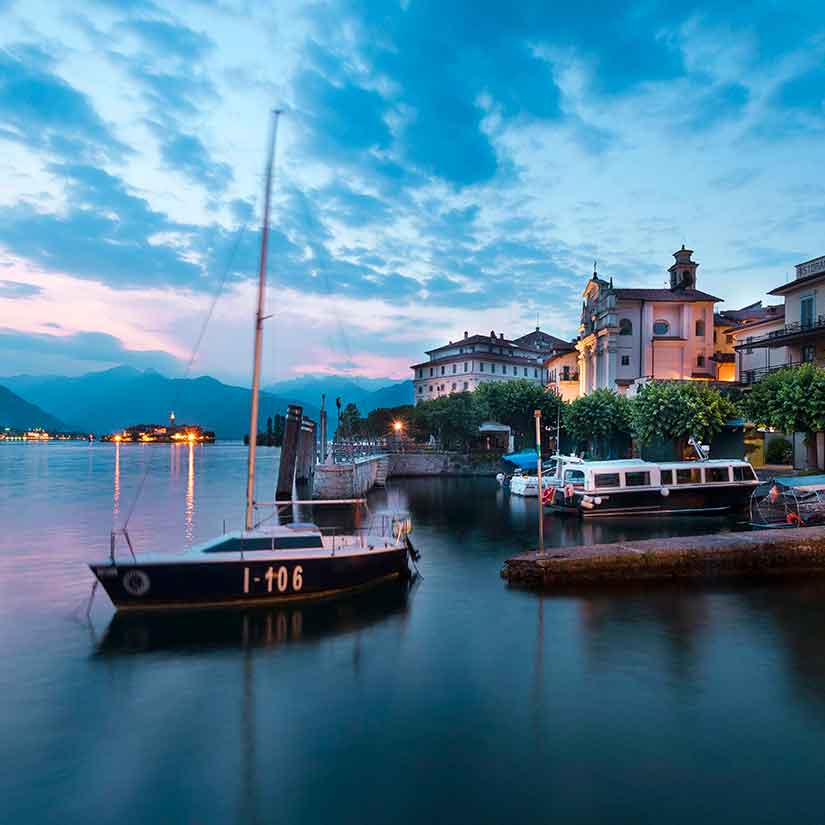






![Le previsioni per il prossimo weekend danno bel tempo!
.
Programmate una giornata all'Isola Bella: dopo la visita di Palazzo Borromeo con i suoi giardini, la terrazza del bistrot Fornello Bottega con Cucina è quello che ci vuole per un pranzo open-air vista lago, a base di prelibatezze italiane.
.
.
.
The weather forecast for next weekend is looking good!
.
It’s time to plan your day at Isola Bella. After visiting Palazzo Borromeo [Borromeo Palace] with its gardens; the terrace of the Fornello Bottega bistro and kitchen is the perfect place for an open-air lunch overlooking the lake. Here you can sample a range of Italian delicacies.
#terreborromeo #lakemaggiore #lagomaggiore #borromeoexperience #stresa #isolabella #gourmet #italianrestaurant](https://borromee.vivastaging.com/wp-content/plugins/instagram-feed-pro/img/placeholder.png)